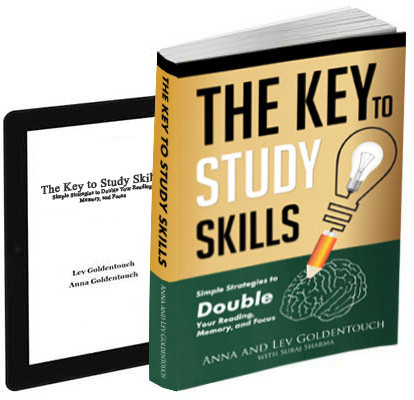Drawing is one of the most natural forms of human expression, a primal skill that starts in childhood. As children, we instinctively pick up pencils, sketch shapes, and translate our thoughts into visual form. This process helps develop hand-eye coordination, spatial awareness, and creative thinking. However, as we grow older, criticism, self-doubt, and academic pressure often push people to abandon drawing altogether. For polymaths, drawing is not just an artistic exercise—it is a vital tool for thinking, learning, and problem-solving. Through drawing, polymaths visualize complex ideas, communicate abstract concepts, and integrate knowledge across various disciplines.
The ability to draw connects ideas and enhances memory, making it an indispensable skill for those seeking to innovate and excel in multiple fields. “Anyone Can Train to Become a Polymath” by Dr. Lev Goldentouch and Prof. Anna Goldentouch explores how drawing serves as a key tool in polymathic thinking and development.
The Natural Inclination to Draw
Drawing is one of the most instinctive forms of expression. As children, we pick up pencils, sketching shapes, and transfer our thoughts into visual form. This early habit helps develop vital cognitive skills such as hand-eye coordination and spatial awareness. Unfortunately, as we grow older, many abandon this natural inclination. Pressures from academic systems, along with self-doubt, discourage people from continuing to draw.
However, for polymaths, this habit of drawing never truly fades. It becomes an essential tool for problem-solving, idea generation, and interdisciplinary thinking. Instead of dismissing drawing as an extraneous skill, polymaths use it to structure their thinking and explore new possibilities across various fields of knowledge.
Drawing as a Tool for Structured Thinking
For polymaths, drawing is not simply about creating art—it is a structured way of thinking. It provides a clear path to visualize and analyze ideas. Graphs, charts, and diagrams are not just for artists; they are powerful tools used across disciplines, from science and engineering to business. For example, scientists use graphs to represent relationships between variables, making abstract numbers more intuitive and accessible. Engineers and designers sketch prototypes or models to test ideas before implementation.
Drawing becomes an intellectual tool that enables polymaths to uncover patterns, simplify complex systems, and explore new avenues of thought that may not be visible through text alone.
Visualizing Complex Ideas
One of the key strengths of drawing is its ability to make complex ideas more comprehensible. Instead of relying on words to explain intricate concepts, polymaths can use sketches, cartoons, or infographics to represent ideas visually. Complex systems, theories, or relationships that are difficult to explain through text alone can often be simplified through visual means. For example, engineers often use diagrams to represent systems or processes, providing clarity for those unfamiliar with the technical details. By visualizing complex concepts, polymaths can communicate abstract ideas more effectively, both to themselves and to others, making it easier to understand and retain information.
Enhancing Memory Retention through Drawing
Studies have shown that visual information is retained far better than text-based information. The act of drawing engages the brain more deeply than reading or writing, helping to solidify concepts in memory.
Research published in Psychological Science found that students who drew concepts while studying had better recall than those who only wrote or read about the material. For polymaths, this enhanced memory retention is crucial as it allows them to absorb and recall information across various disciplines. Whether summarizing an article or visualizing a complex concept, drawing serves as a powerful tool for reinforcing learning and ensuring that important ideas are retained over time.
Drawing’s Role in Creativity and Problem-Solving
Drawing stimulates both hemispheres of the brain, engaging creative and analytical thinking simultaneously. This dual engagement enhances problem-solving abilities and encourages the generation of new ideas. Doodling, for example, is a simple yet effective way to engage the mind, improving focus and boosting creativity. When tackling a complex problem, polymaths often use drawing to work through possible solutions.
By sketching their thoughts, they can uncover patterns, test hypotheses, and see connections that may not be immediately apparent. Drawing becomes not just a way to organize thoughts, but a means of unlocking new ways of thinking and finding innovative solutions.
How Drawing Shaped Apple’s Innovation
The influence of drawing on innovation can be seen in the early development of Apple Computers. Steve Jobs, in particular, was known for his insistence on using drawing to visualize every aspect of product design. Jobs believed that the design process—both for functionality and aesthetics—needed to be visualized before implementation. This visual approach, grounded in polymathic thinking, revolutionized personal computing, making Apple products not only technically advanced but also intuitive and engaging. Jobs’ dedication to sketching helped shape Apple’s user-centric design philosophy, proving that drawing is a tool not just for artists but for innovators and polymaths in all fields.
The Science Behind Drawing and Cognitive Development
The connection between drawing and cognitive development is supported by scientific research. Studies show that drawing promotes deeper processing of information and enhances memory retention.
A study conducted by Harvard University found that visual learners process information in multiple ways, engaging both the left and right sides of the brain. This helps improve understanding and retention. Drawing also aids in problem-solving by forcing the brain to think about concepts in a new way. For polymaths, the ability to engage in multiple modes of thinking—verbal, visual, and abstract—can lead to a richer understanding of complex ideas and make it easier to connect knowledge across various disciplines.
Why Schools Should Embrace Drawing
Traditional education often overlooks drawing as a learning tool, preferring to focus on text-based learning. Many teachers are hesitant to incorporate drawing into classrooms due to a lack of confidence in their drawing abilities or uncertainty about how to evaluate visual work. However, drawing has significant cognitive benefits that can help students understand abstract concepts, retain information longer, and develop creativity. By encouraging students to use drawing as a tool for learning, educators can help them engage more deeply with the material and foster interdisciplinary thinking. Drawing also helps students visualize complex ideas, making them easier to understand and remember. In a world where creativity and problem-solving are increasingly important, integrating drawing into education is crucial for developing polymathic thinkers.
How to Integrate Drawing into Your Learning
Polymaths incorporate drawing into their learning in several ways. Here are some practical suggestions to help you get started:
- Turn Information into Diagrams: When encountering new information, sketch it out in a mind map or flowchart to visualize the relationships between ideas.
- Use Doodling for Problem-Solving: Keep a notebook for doodling as you work through complex problems. This can help generate new ideas and foster creative thinking.
- Draw to Summarize Information: Instead of writing long notes, create visual summaries such as sketch-notes or infographics to reinforce your learning.
- Reimagine Presentations: Replace traditional bullet points with drawings and infographics in your presentations. This can make your ideas more engaging and accessible.
- Experiment with Different Styles: Explore different types of drawings—cartoons, diagrams, or architectural sketches—to find what works best for you.
By incorporating these techniques into your learning process, you can harness the full potential of drawing as a tool for thinking and problem-solving.
Step Into Your Polymathic Future with This Book
Suppose you’re interested in exploring how drawing can enhance your thinking and learning. In that case, “Anyone Can Train to Become a Polymath” by Dr. Lev Goldentouch and Prof. Anna Goldentouch provides valuable insights. The book reveals how polymaths use drawing as a tool to structure their thoughts, connect ideas across disciplines, and solve complex problems. Rediscovering the power of drawing will enhance your ability to think creatively, retain information, and innovate across multiple fields.

Get 4 Free Sample Chapters of the Key To Study Book
Get access to advanced training, and a selection of free apps to train your reading speed and visual memory

